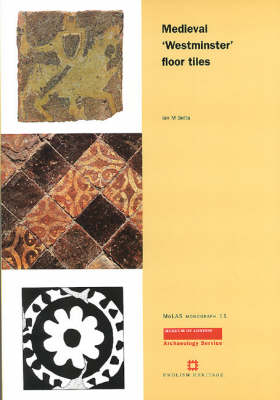Westminster' tiles - named after Westminster Abbey where they were first recognised - are among the most common types of medieval floor tiles found in London. At least some of these tiles were made at a kiln site in Farrington Road. Westminster' tiles can be distinguished from other medieval floor tiles by their size, poor quality and the clay used in their manufacture. Another distinctive feature is their unusually wide distribution - ranging from Canterbury in Kent to Croxden Abbey, Staffordshire - which may reflect the movement of tiles or the work of itinerant tilemakers.The manufacture of mainly square, plain-glazed and decorated Westminster' tiles in the London area in the 1250s and 1260s - such as those in the Muniment Room at Westminster Abbey - followed an earlier phase of lead-glazed mosaic floor tile manufacture in the 1230s and 1240s. Westminster' tiles could be fired more easily and were quicker to lay, and they were used by many monastic orders and parish churches in the London area in the second half of the 13th century. In the Midlands Westminster' tiles were used in abbeys and churches, and in castles such as Baginton, Warwickshire and Kirby Muxloe, Leicestershire.
Over 160 different designs were produced, ranging from knights on horseback, heraldic shields, mythical beasts and fleurs-de-lis to abstract geometric designs. This Monograph includes an illustrated catalogue giving the provenance of each design, together with the plain-glazed examples.
- ISBN10 1901992241
- ISBN13 9781901992243
- Publish Date 15 July 2002
- Publish Status Out of Print
- Out of Print 16 September 2016
- Publish Country GB
- Publisher Museum of London Archaeology
- Imprint Museum of London Archaeology Service
- Format Paperback
- Pages 78
- Language English
